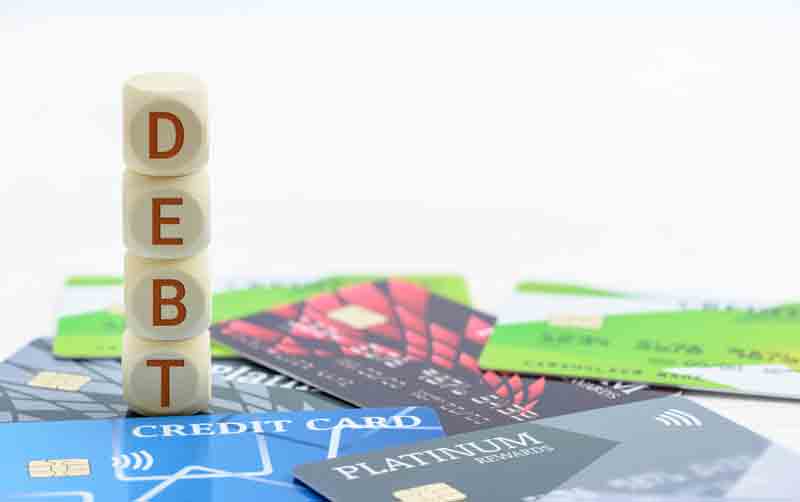The Ultimate Guide to Debt Consolidation: A Roadmap to Financial Freedom
Are you drowning in debt, feeling overwhelmed and unsure of how to get out? Are you tired of the constant calls from creditors and the stress of trying to make multiple payments? If so, debt consolidation may be the solution you’ve been looking for.
But what exactly is debt consolidation and how does it work? In a nutshell, debt consolidation is the process of combining multiple debts into one manageable loan. This can be done through a balance transfer credit card, a personal loan, or a home equity loan. By consolidating your debts, you can simplify your payments, lower your monthly payments, and potentially save money on interest charges.
Before we dive into the details of debt consolidation, let’s first explore the reasons why it’s so important. According to a study by the Federal Reserve, the average American household carries $137,063 in debt. This includes mortgages, student loans, credit card debt, and car loans. With so much debt, it’s no wonder so many people are feeling the weight of financial stress on their shoulders.
But debt consolidation isn’t just about getting a lower monthly payment or saving money on interest charges. It’s about taking control of your finances and taking the first step towards financial freedom.
So, are you ready to take control of your debt and start on the path to financial freedom? Let’s dive in.
Table of Contents
- Why Consolidate Your Debt
- How to Consolidate Your Debt
- Types of Debt Consolidation
- Balance Transfer Credit Card
- Personal Loan
- Home Equity Loan
- Tips for Successful Debt Consolidation
- Conclusion
Why Consolidate Your Debt
Consolidating your debt can offer a number of benefits, including:
- Lowering your monthly payments
- Simplifying your finances by having one payment to keep track of
- Potentially saving money on interest charges.
One of the major benefits of consolidating your debts is the ability to lower your monthly payments. This can be achieved by extending the loan term or by securing a lower interest rate. By doing so, you can free up more money in your budget to pay off other debts or to save for the future.
Another advantage of debt consolidation is the ability to simplify your finances. Instead of juggling multiple payments and due dates, you’ll only have to keep track of one. This can make budgeting and money management much easier.
But it’s important to note that debt consolidation doesn’t eliminate debt – it simply reorganizes it. In order to truly get out of debt, you’ll need to change the way you spend and save money. This can be a difficult task and it’s important to develop a budget and stick to it.
How to Consolidate Your Debt
When it comes to consolidating your debt, there are a few steps you’ll need to take:
- Gather all of your debt information, including balances and interest rates
- Compare the different options for debt consolidation
- Choose the option that’s right for you
- Create a plan to pay off the consolidated debt
The first step in consolidating your debt is to gather
all of your debt information. This includes the balances and interest rates of each debt you have. This will allow you to see exactly how much you owe and to which creditors. Once you have this information, you can then compare the different options for debt consolidation.
Types of Debt Consolidation
There are several types of debt consolidation options available, including:
Balance Transfer Credit Card
A balance transfer credit card allows you to transfer multiple credit card balances onto one card with a lower interest rate. This can be a great option if you have a good credit score and can qualify for a card with a 0% introductory rate.
For example, let’s say you have $10,000 in credit card debt with an average interest rate of 20%. By transferring that debt to a balance transfer credit card with a 0% introductory rate for 12 months, you could save $2,000 in interest charges.
However, it’s important to note that balance transfer credit cards often come with a balance transfer fee, usually around 3% of the amount transferred. So, if you’re transferring $10,000, you’ll have to pay a $300 fee. Additionally, after the introductory rate expires, the interest rate on the balance transfer credit card will likely be higher than the rate on your original credit cards.
Personal Loan
A personal loan is another option for consolidating debt. This type of loan is unsecured, meaning it’s not backed by collateral like a home or car. Personal loans can have a lower interest rate than credit cards and can be used to consolidate multiple types of debt, including credit card debt and medical debt.
For example, let’s say you have $15,000 in credit card debt with an average interest rate of 18%. By taking out a personal loan with an interest rate of 12%, you could save $1,800 in interest charges over the life of the loan.
Home Equity Loan
A home equity loan is a type of secured loan that uses your home as collateral. Because the loan is secured by your home, the interest rate is typically lower than that of an unsecured personal loan.
This type of loan can be a good option for consolidating debt if you have a lot of equity in your home. However, it’s important to keep in mind that if you’re unable to make payments on the loan, your home could be foreclosed on.
Once you’ve compared the different options and chosen the one that’s right for you, it’s important to create a plan to pay off the consolidated debt. This includes setting a budget, making payments on time, and avoiding taking on new debt.
Tips for Successful Debt Consolidation
- Create a budget and stick to it.
- Make payments on time to avoid late fees and additional interest charges.
- Avoid taking on new debt while you’re working to pay off your consolidated debt.
- Consider working with a financial advisor or credit counselor to help you stay on track.
Conclusion
Debt consolidation can be a powerful tool for getting out of debt and taking control of your finances. By consolidating your debts, you can lower your monthly payments, simplify your finances, and potentially save money on interest charges. However, it’s important to remember that debt consolidation doesn’t eliminate debt – it simply reorganizes it. To truly get out of debt, you’ll need to change the way you spend and save money.
If you’re considering debt consolidation, it’s important to understand the different options available to you and to choose the one that’s right for your unique situation. And always consider consulting with financial advisor or credit counselor for more guidance
and support. With the right plan and the determination to stick to it, debt consolidation can be the first step towards financial freedom.
Remember, consolidating your debt is a big decision and should not be taken lightly. It’s important to do your research and to fully understand the pros and cons of each option before making a decision. By following the tips and strategies outlined in this guide, you can take control of your debt and start on the path to a brighter financial future.
It’s also important to note that consolidating your debt with a loan can have an impact on your credit score. However, with the right plan and a commitment to making payments on time, you can rebuild your credit over time.
Don’t let debt control your life any longer. Take the first step towards financial freedom with debt consolidation.
This article is for informational purposes only and should not be considered financial advice. It’s always a good idea to consult with a financial advisor or credit counselor before making any financial decisions.


Leave a Comment